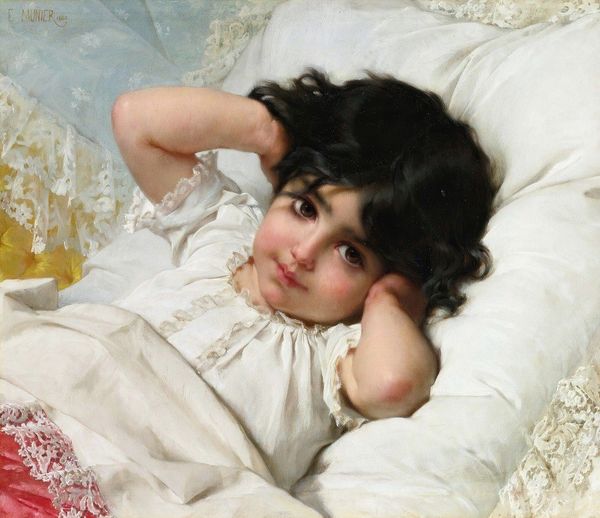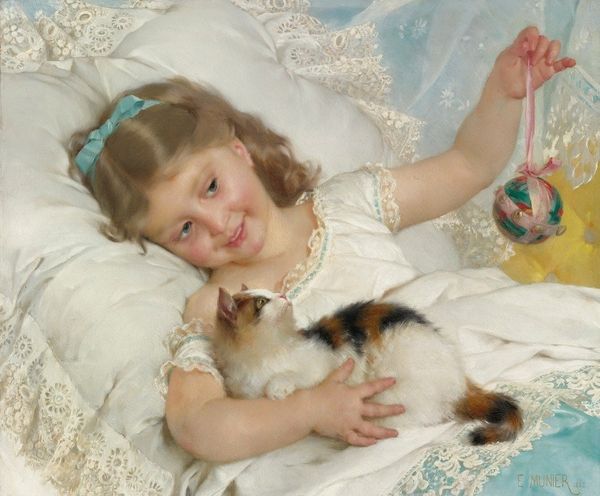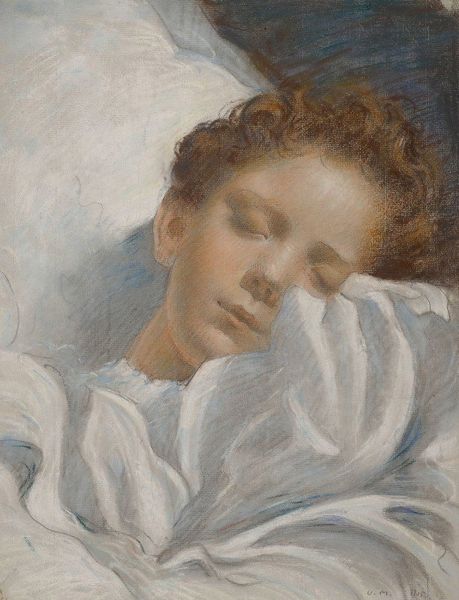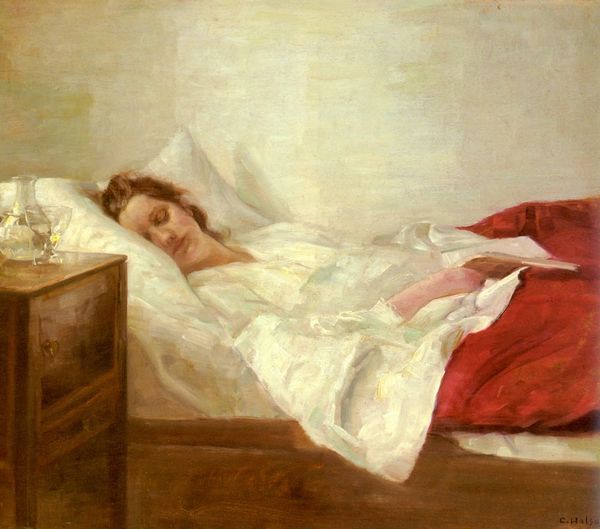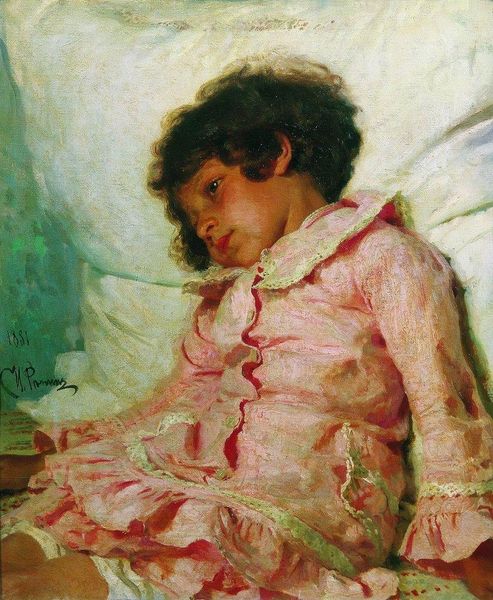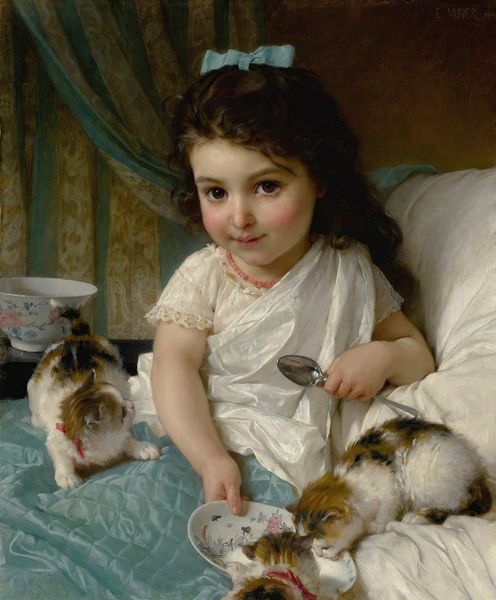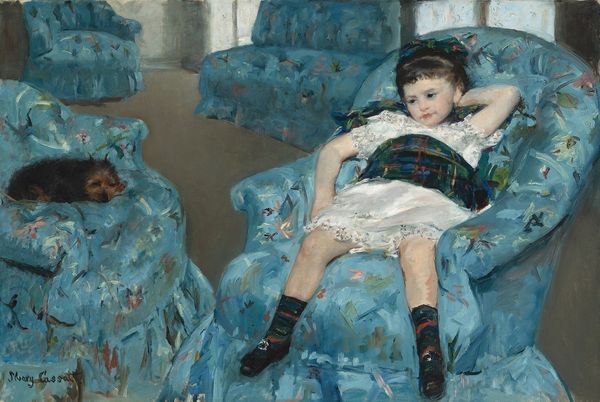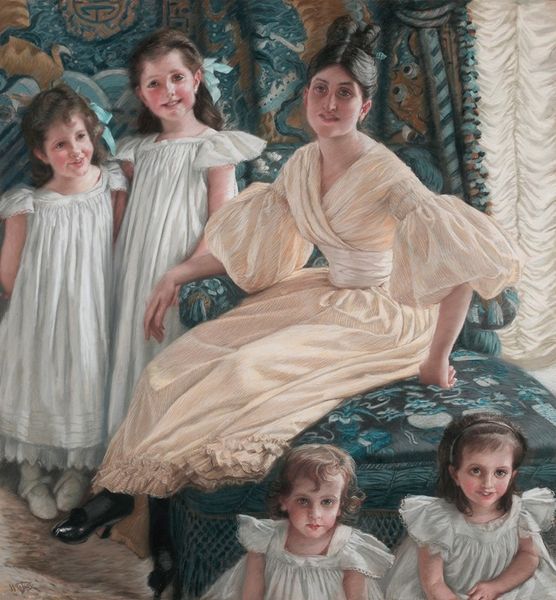
Copyright: Public Domain: Artvee
Editor: Here we have Émile Munier's "Girl Resting," created in 1885 using oil paints. It's very sweet, very intimate, and feels… staged somehow. I am also curious to learn more about the types of textiles present in the piece, they really caught my eye. What's your interpretation? Curator: This is academic art, rooted in the intense study of materials. The choice of oil allows for that exquisite rendering of light on fabric – consider the production process involved in these manufactured goods. Notice how lace becomes a key signifier of class and domestic labor here? The little girl's resting underscores those realities and hides them under its idyllic gaze. Editor: So you're suggesting the material quality is essentially masking other class and labor issues of the period? Curator: Exactly! Munier romanticizes a life seemingly free from the realities of production. Every thread is a testament to unseen labour, isn’t it? The lace trim, the manufactured dyes… It is all consumed to produce an ideal image, for whom and by whom? Editor: That's a fantastic point, I didn't consider it from a production perspective. It is almost an advert for the good life available to those wealthy enough to enjoy all of that fabric. Curator: Precisely. And oil paint itself becomes a material symbol of that excess, right? So easy to apply such smooth texture on something that stands for wealth in itself! Editor: This piece makes so much more sense looking at it through the lens of the labor and material processes that produced it. Thanks for sharing that insight! Curator: My pleasure. This has highlighted the connection between artistry and materialism. It will be valuable in my future material assessments.
Comments
No comments
Be the first to comment and join the conversation on the ultimate creative platform.
